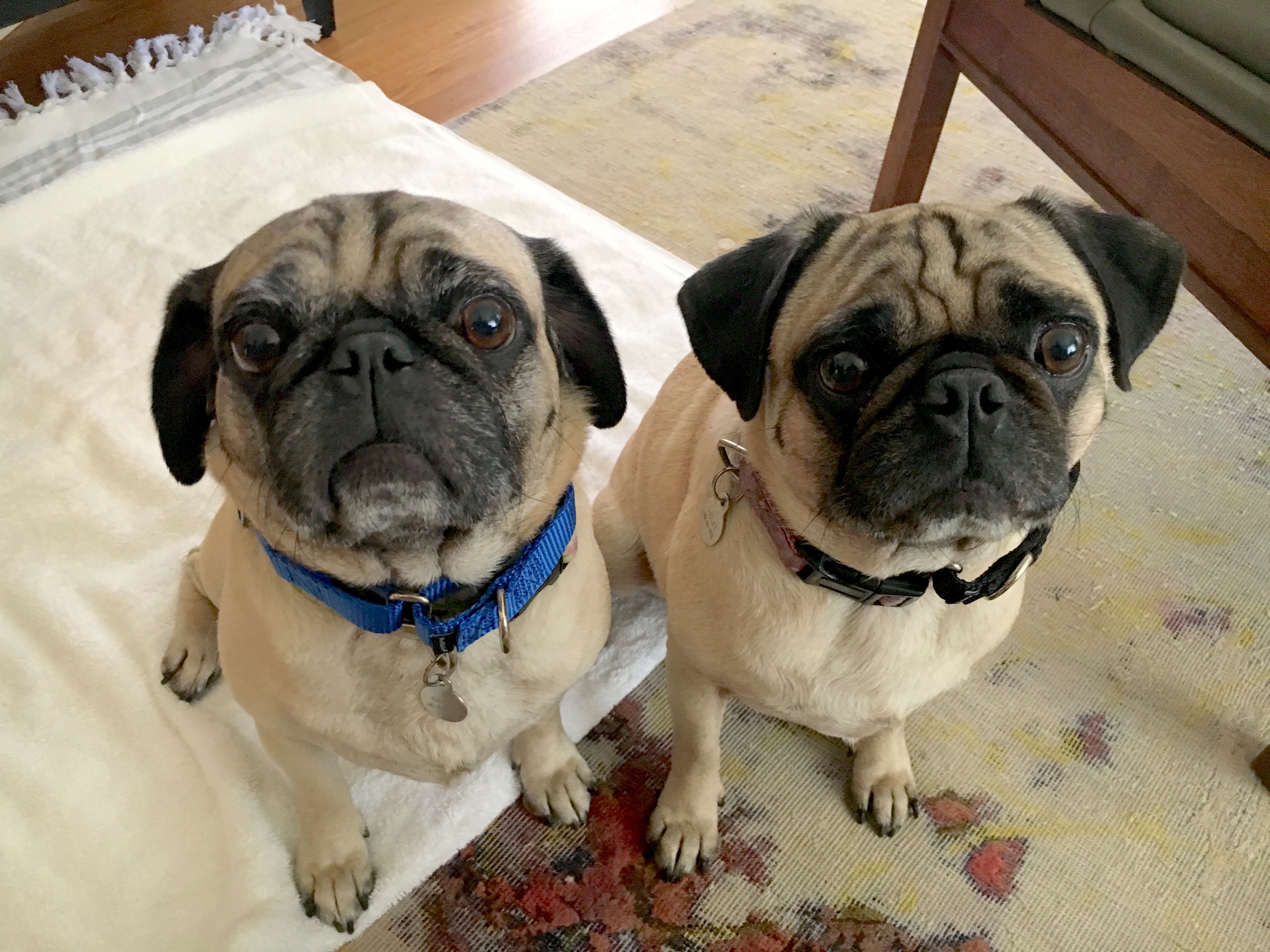Training a Pair of Santa Monica Pugs to Focus so they Can Calm Down and Listen
By: David Codr
Published Date: October 12, 2017
For this Santa Monica in home dog training session we taught a pair of 5 year-old Pugs (Daisy and Violet) to stop getting too excited to listen and learn to focus to help stop their excitement and aggression to dogs.
I started things off by inquiring about the rules and boundaries the guardian had in place for the dogs. Despite raising a child and being a powerful executive by day, the guardian let rules and structure fall by the wayside when this good looking pair of Pugs arrived.
We spent over an hour going over the importance of rules and how to enforce them so that the dogs see and respect the humans as leaders and get more out of the Pug training. By adding little twists to many of the simple repeatable tasks the humans do with the dogs, they will start building up respect as leaders in this home.
One of the issues the dogs needed help with was dog aggression or reactivity to other dogs. I find this frequently occurs because the dog thinks its on duty and its task is to protect the humans. For many of my clients, once the dogs see and respect them as authority figures, the dog on dog aggression goes away.
In case the dogs continue to act aggressive to other dogs, I demonstrated how to train a dog to focus. You can watch me do this in the video below.
Being able to redirect a dog’s attention to you when it sees something its going to react to can be a powerful tool when modifying dog behavior. Dogs can’t multi-task so out of sight can easily lead to out of mind which is why the focus exercise is so effective.
Its going to be important to go slow and keep practicing over and over until the dog performs well consistently. Only then should the guardian move on to the next step in developing the dog’s focus. If they take their time and don’t rush, the should be able to get the dogs to stop being dog aggressive by using the focus command.
In the mean time, I wanted to give the guardian a tool to use that will give the handler more control over the dogs. Many trainers use pinch, prong or shock collars for this but I do not utilize any tool that works by causing a dog pain or use the threat of pain.
I pulled out a pair of Martingale collars and showed the humans how to add the special twist of the leash to stop the leash pulling. But simply throwing a collar on a dog worn work by itself. To help the guardians use the Martingales more effectively, I spent a few minutes sharing the 5 rules I like to use for a structured walk.
We met a few dogs on the structured walk and were able to redirect the dog’s attention and get them to listen and not react with the new tools and techniques. The more the humans practice them, the better the dog’s behavior will become.
When we returned to the home, I wanted to go over some feeding tips. One of the things I have learned as a dog behaviorist is that dogs spend 90% of their time looking for food in the wild. When they do find food, they eat in a structured way.
I spent several minutes helping the guardians assume more leadership status with the dogs through something they do everyday anyway; feeding them. You can get some free dog training tips by checking out the video below.
As the more confident dog, I had the guardian feed Violet first. But since the dogs are the same age, I recommended letting whoever was behaving the best eat first in the future if all other things are equal.
By the end of the session the dogs were following the new rules on their own. I chuckled a bit as I filmed the roadmap to success video below as both dogs ended up on the simulated dog bed we had only introduced a short time before!
Now that the guardians understand the importance of leadership in relation to providing the dogs with rules and structure, all that’s left is to put the plan into action.
The guardians will need to be consistent for the next month; practicing the focus, enforcing rules, petting with a purpose and rewarding desired behaviors through passive training. But based on how quickly the humans picked things up and the dogs responded, Im betting its going to be a short transition to well behaved Pug land.
Categorized in: Dog Behavior


